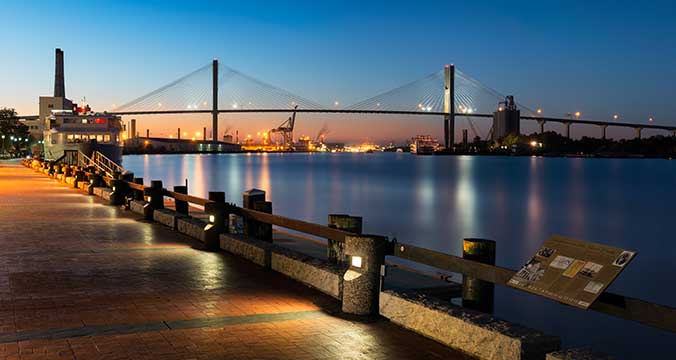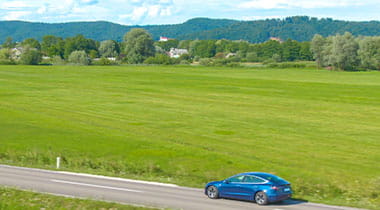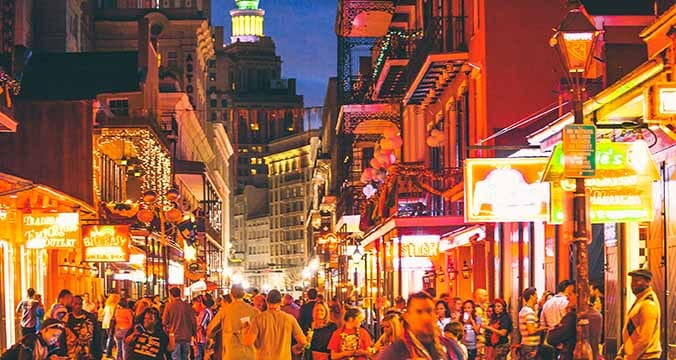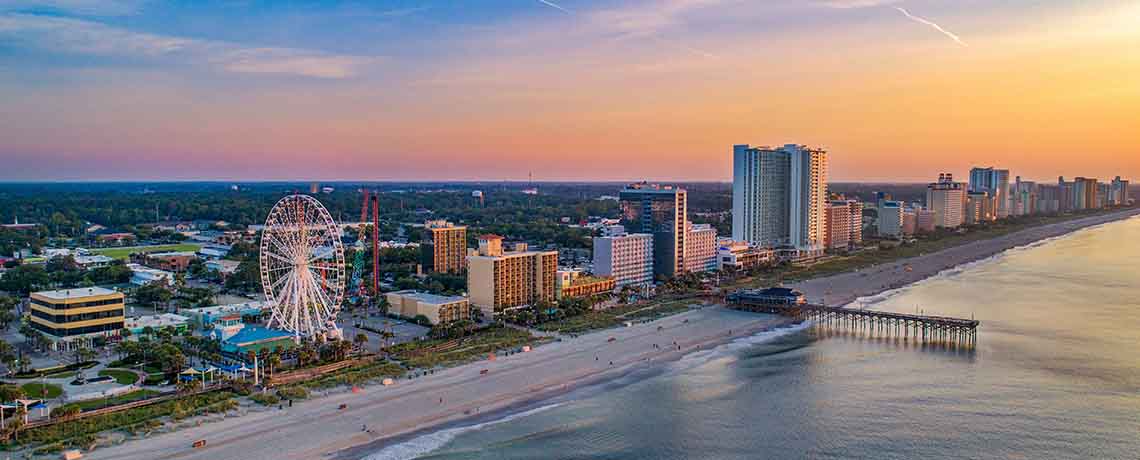Cobblestone streets canopied in moss-draped live oaks. Antebellum mansions with stately pillars and inviting porches. Manicured gardens outlined in ornate wrought-iron fences. It’s no secret that Savannah is a picturesque American city that oozes Southern charm. But Georgia’s oldest city—dating to 1733 with the arrival of General James Oglethorpe (and some 120 fellow Brits), who was granted a charter by King George II to establish the 13th colony—is more than just a pretty picture. Scratch the surface, and the Hostess City of the South has all the substance of a world-class travel destination that lives up to its recent accolades of being ranked No. 3 in The Top 15 Cities in the United States in the Travel + Leisure World’s Best Awards 2018 readers’ survey (a position it’s earned on the survey for the third consecutive year) and landing a spot on TripAdvisor’s list of the 30 Top U.S.A. Cities to Visit in 2018.
So when it comes to Savannah, how do we love thee? Let us count the ways.
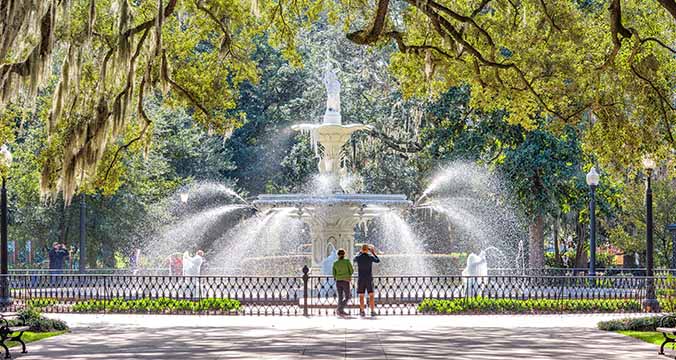
EXQUISITENESS SQUARED
When General Oglethorpe planned the layout for Savannah, he threaded 24 public squares and parks through his urban grid design, now known as the Oglethorpe Plan. Widely considered America’s first planned city, Savannah has preserved 22 of those original squares (the other 2 were casualties of development) throughout the 2.5-square-mile Historic District, which lays claim to composing the largest registered Urban Historic Landmark District in the country. Just as they did centuries ago, Savannah’s squares today serve as social gathering places, offering shady retreats from the bustle of city life with soothing fountains, colorful gardens, historic monuments, grassy open spaces and plenty of park benches where you can rest and people-watch. The most sprawling and most iconic square is Forsyth Park, a 30-acre oasis that’s home to a Fragrant Garden for the blind, an amphitheater, a café, basketball and tennis courts, walking paths, playgrounds and a 150-year-old cast-iron Parisian-style fountain. Many visit the park just to see the fountain, which is among the most-photographed attractions in the city as well as a dramatic backdrop for real-life marriage proposals as well as Hollywood films (think Midnight in the Garden of Good and Evil and Forrest Gump). Fans of Forrest Gump will also want to stroll through Chippewa Square, where Forrest narrated his life story from a park bench. While a replica of the bench is now housed in the nearby Savannah History Museum, the square offers a relaxing stopover before catching a show at the historic Savannah Theatre, which sits on the square, and the perfect setting to try out that oh-so quotable line from Forrest Gump—you know, something about life being like a box of chocolates.
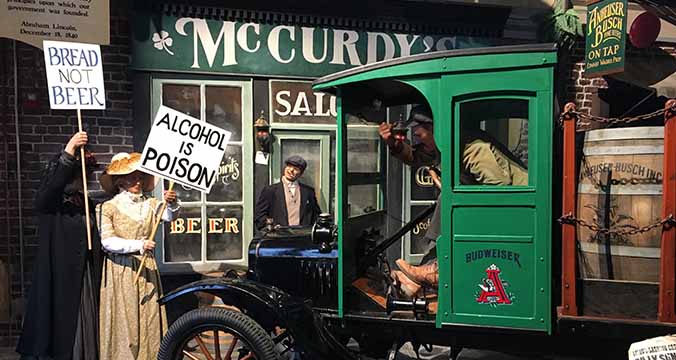
HISTORIC ARCHITECTURE GALORE
While Savannah’s squares and parks are among the city’s most-beloved treasures, it’s what surrounds them that are the shining gems—namely, some 1,600 historically and architecturally significant homes and commercial buildings as well as a pedestrian-friendly city market and a trove of museums.
Fringing just one square, Lafayette Square, for example, is the childhood home of author Flannery O’Connor; the Cathedral of St. John the Baptist, often called the “Sistine of the South”; and the Hamilton–Turner Inn, a luxury hotel with French Empire-style architecture dating to 1873, just to name a few attractions.
Another must-do destination, tucked between Ellis and Franklin Squares, is City Market. Here, you can explore four blocks of restaurants, bars, shops and art galleries as well as hop on a trolley tour or take a carriage ride. Smack-dab in the market, you’ll also find the Prohibition Museum, opened last year. The only one of its kind in the country, the museum features exhibits that tell the story of America’s failed “noble experiment” and, near the exit, welcomes museum-goers (age 21 and over) to a speakeasy that serves up 1920s’-style cocktails.
Families with little scouts will want to check out Girl Scouts founder Juliette Gordon Low’s birthplace, the city’s first registered National Historic Landmark that’s now a museum. Love art and history? The Telfair Museums offer a winning trifecta with the Telfair Academy, a Neoclassical Regency- style mansion built in 1819 with 19th-century period rooms and 19th- and 20th-century American and European art; the Regency-style 1819 Owens–Thomas House, along with its gardens, carriage house and former slave quarters; and the 2006 Jepson Center, showcasing modern and contemporary art. And literary and film fans may want to see such sites as the Mercer Williams House, completed circa 1868, and Bonaventure Cemetery, both of which played starring roles in Midnight in the Garden of Good and Evil.
RIVER STREET CRED
While Savannah carefully preserves its history, this sophisticated small city isn’t trapped in the past. One visit to River Street along the mighty Savannah River will reveal a side of Savannah that’s trendy, vibrant and downright edgy. Here, old cotton warehouses flanking the cobblestone street have been converted to house some 75 restaurants and bars, art and antiques galleries, and boutiques and stores selling everything from candy to couture. Restaurants with balcony seating and rooftop bars offer enviable views of old-fashioned riverboats and colossal container ships plying the river, and park benches along the paved waterfront are popular spots for watching the goings-on, which may include local musicians playing for tips.
Seeing the city from the water is another option here, with Savannah Riverboat Cruises hosting daily departures of guided cruises, including dining cruises, sunset cruises, holiday cruises and sightseeing cruises. (On the sightseeing cruise, you might even see a canon firing when the ship passes Old Fort Jackson, Georgia’s oldest standing brick fortification, built in 1808–1812.) Or simply wander on your own, pausing at the fountains and monuments—notable among them, the African American monument, the World War II monument and the Olympic Cauldron monument (while the 1996 Summer Olympic Games were hosted in Atlanta, the yachting competitions were held in Savannah). River Street is also home to The Waving Girl, a bronze statue commemorating Florence Martus, the sister of a former lighthouse keeper who waved to ships in Savannah’s port for more than 44 years and, today, symbolizes the city’s hospitality.
Is it any wonder why so many people fall in love at first visit to Savannah? Even Union General Sherman spared Savannah in his fiery March to the Sea campaign in 1864, for it’s said that, upon arriving in Savannah on December 22, he was so enthralled with the city’s beauty that he sent a telegram to President Lincoln offering the city itself as a Christmas gift.










